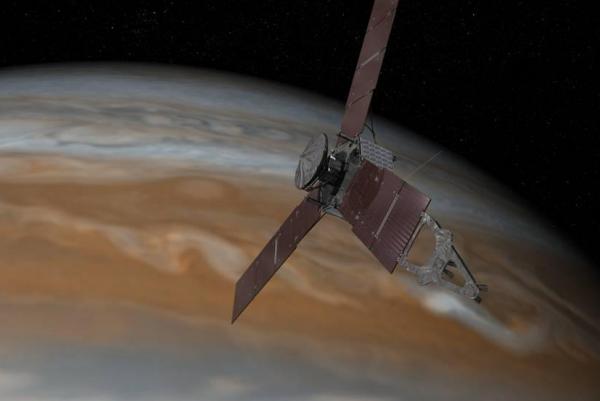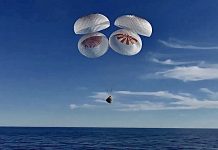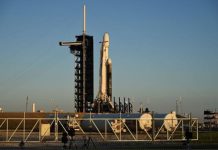
WASHINGTON, June 16 (UPI) — NASA’s solar-powered Juno probe is less than three weeks and 8.6 million miles away from its Jupiter flyby, scheduled for July 4. Upon its initial approach, Juno will fly within 2,900 miles of the gas giant’s upper atmosphere.
“At this time last year our New Horizons spacecraft was closing in for humanity’s first close views of Pluto,” Diane Brown, Juno program executive at NASA’s headquarters, said in a news release. “Now, Juno is poised to go closer to Jupiter than any spacecraft ever before to unlock the mysteries of what lies within.”
Once with in orbit around Jupiter, Juno will execute 37 approaches in order to study the planet’s atmosphere and magnetosphere.
Scientists say Juno’s trips into Jupiter’s clouds will come with serious risk. Beneath the upper layers of Jupiter’s atmosphere lies intensely pressurized hydrogen. The planet’s fast spin rate imparts an electromagnetic field to the metallic gas, with electrons, protons and ions swirling about at the speed of light.
Juno’s wiring and instruments are specifically designed to withstand intense radiation.
“Over the life of the mission, Juno will be exposed to the equivalent of over 100 million dental X-rays,” said Rick Nybakken, Juno’s project manager at NASA’s Jet Propulsion Laboratory. “But, we are ready.”
“We designed an orbit around Jupiter that minimizes exposure to Jupiter’s harsh radiation environment,” Nybakken said. “This orbit allows us to survive long enough to obtain the tantalizing science data that we have traveled so far to get.”
Juno has spent nearly five years on its flight to Jupiter; it will spend a year conducting its 37 orbital flybys.





